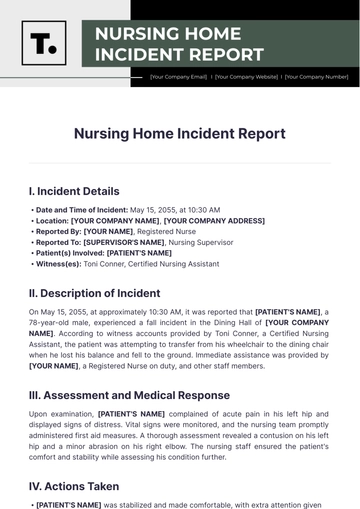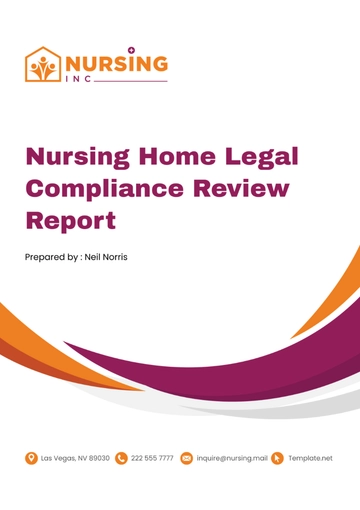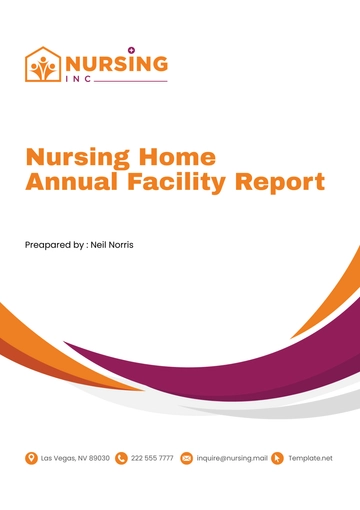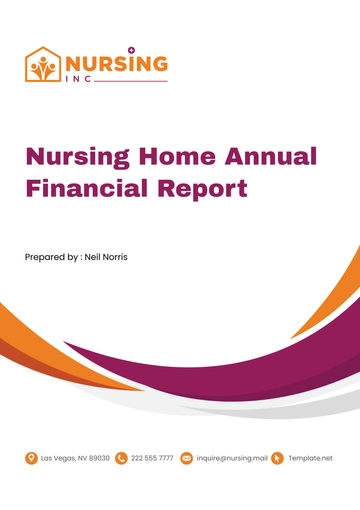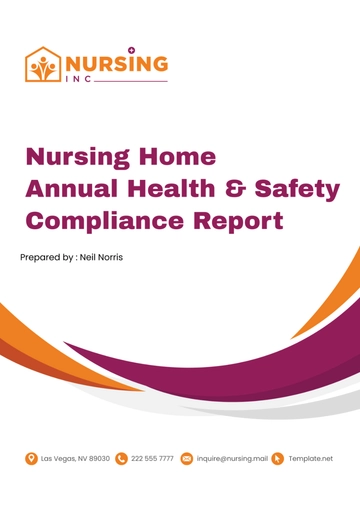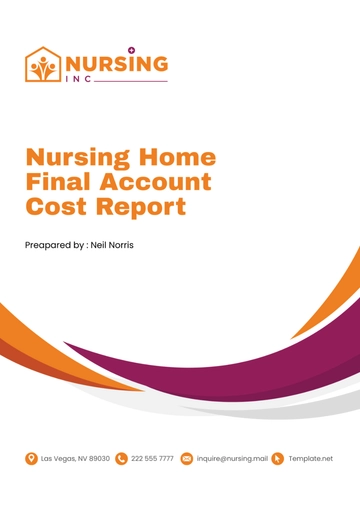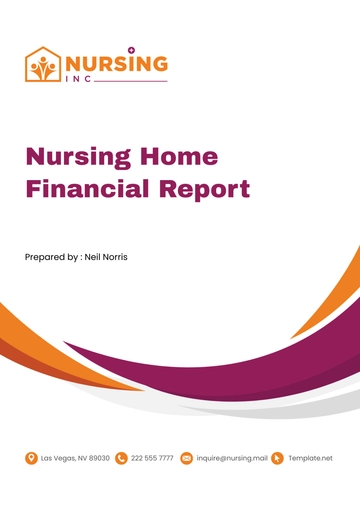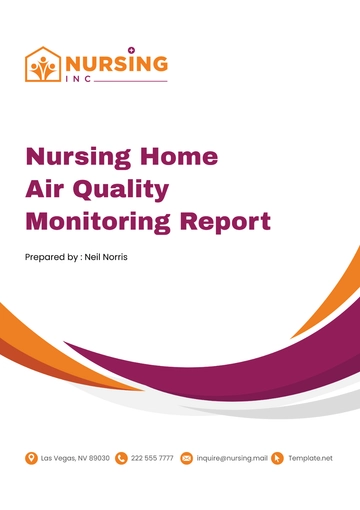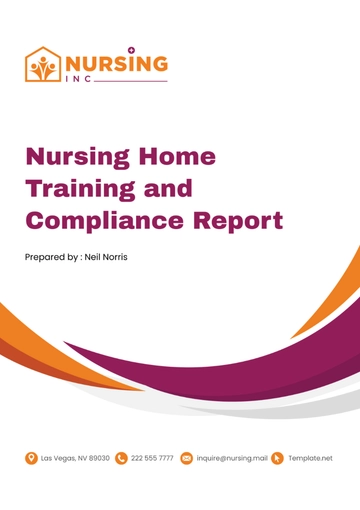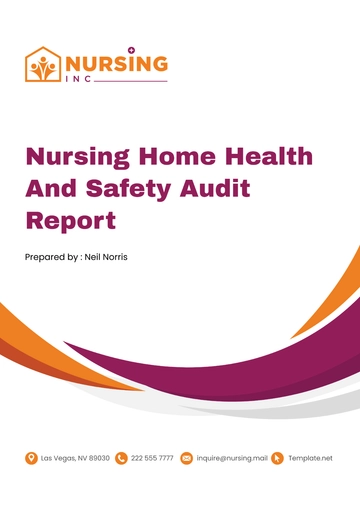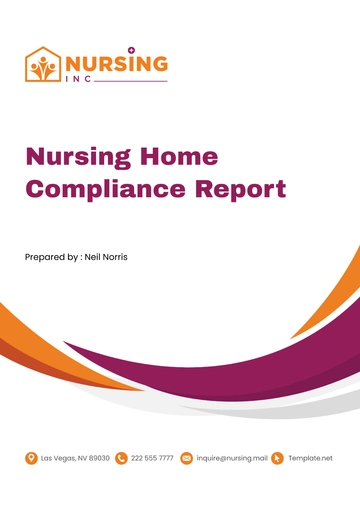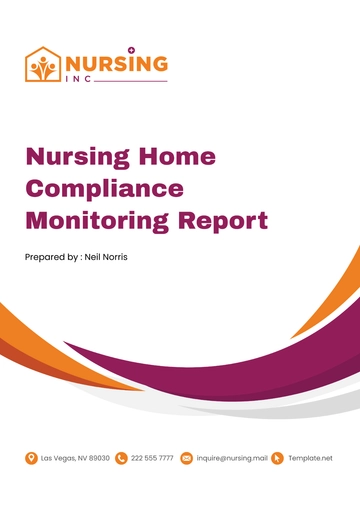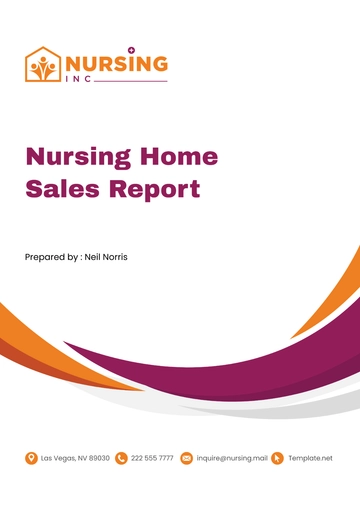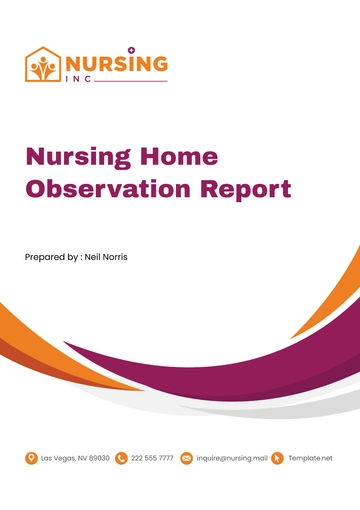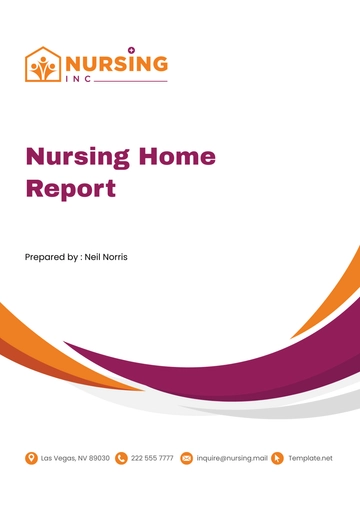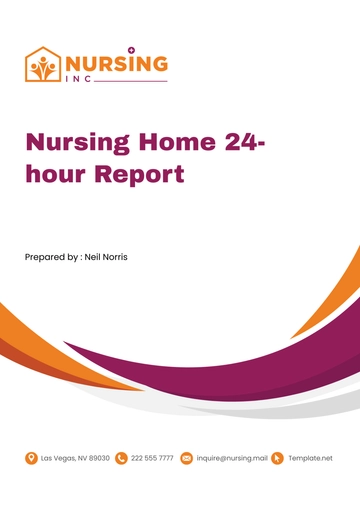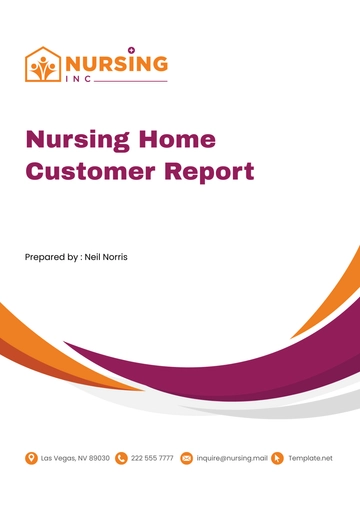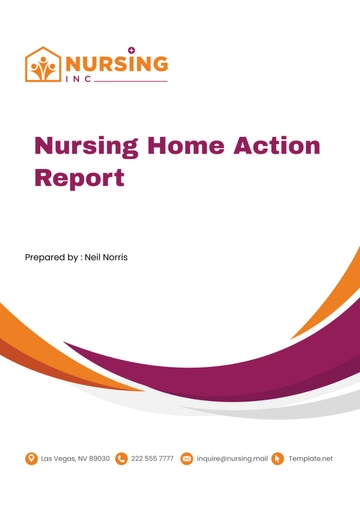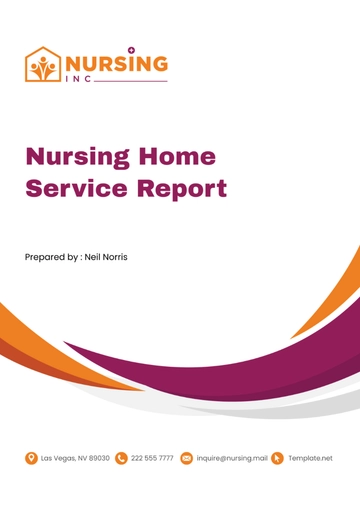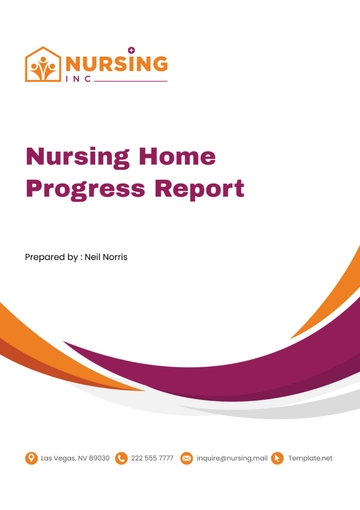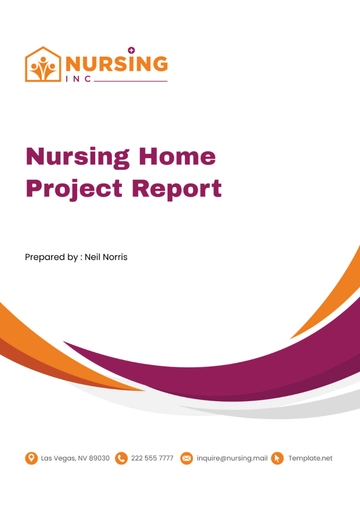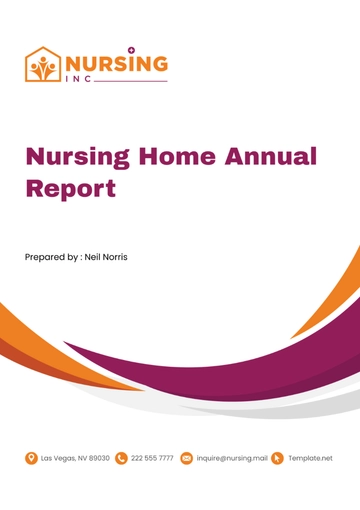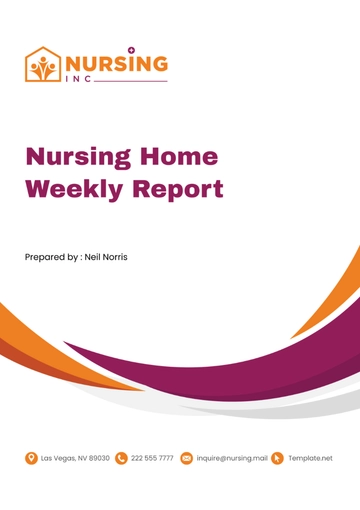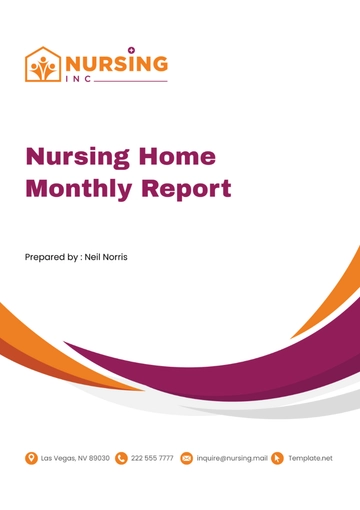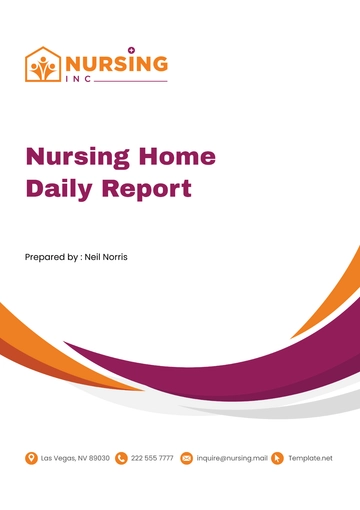Free Nursing Home Legal Compliance Review Report

I. Executive Summary
The following report is a comprehensive legal compliance review of the operations of [Your Company Name]. This document encompasses a thorough investigation of various measures implemented to ensure adherence to all legal and regulatory guidelines pertinent to health care and senior living organizations.
Through intensive assessments and evaluations, this report looks into various parameters of operations, regulatory compliance, policy implementation, and safety protocols to evaluate the current standing of [Your Company Name] in the landscape of legal compliance. The aim is to provide a clear picture of the nursing home’s adherence to the laws and regulations that govern its operations.
The report also suggests measures to further fortify the existing protocols, and rectify deviations, if any, thereby improving the overall compliance framework. These recommendations are designed to address the specific issues identified during the audit and to enhance the overall compliance measures of [Your Company Name].
II. Introduction
A. Purpose of the Report
The primary purpose of this report is to ensure that the nursing home is in full compliance with all legal and regulatory guidelines that govern its operations. Additionally this report intends to:
Ensure Legal Compliance: The report aims to verify that the nursing home is operating within the boundaries of all relevant laws and regulations. This is crucial to avoid any legal complications and to ensure smooth operations. It also helps in maintaining the trust of the residents and their families.
Adhere to Regulatory Guidelines: The report checks whether the nursing home is following all guidelines set by regulatory bodies. This is important to maintain the trust of stakeholders and uphold the nursing home’s reputation. It also ensures that the nursing home is providing the best possible care to its residents.
Maintain Operational Standards: The report assesses if the nursing home is maintaining the high operational standards expected of health care institutions. This includes the quality of care provided to the residents, the cleanliness of the facility, and the efficiency of the operations.
B. Scope of the Report
The scope of this report extends to all areas of operation within the nursing home that are subject to legal and regulatory oversight. This includes, but is not limited to:
Patient Care Standards: The report evaluates the standards of patient care provided by the nursing home. This involves assessing the quality of medical care, the responsiveness of the staff, and the overall well-being of the residents.
Employee Conduct Regulations: The report reviews whether employees are conducting themselves in accordance with all relevant regulations. This includes their interactions with the residents, their adherence to work schedules, and their compliance with workplace safety guidelines.
Data Privacy Laws: The report checks if the nursing home is adhering to all data privacy laws. This is crucial in maintaining the privacy and dignity of the residents.
Facility Management Guidelines: The report assesses whether the management of the facility is in line with all relevant guidelines. This includes the maintenance of the physical infrastructure, the management of resources, and the implementation of safety protocols.
C. Methodology
The methodology used for this audit involves a comprehensive review of all relevant documentation, interviews with key personnel, and on-site inspections of the facility and its operations:
Document Review: The audit begins with a thorough review of all documents related to the operations of the nursing home. This includes policy documents, procedure manuals, and records of previous audits.
Personnel Interviews: Key personnel are interviewed to gain insights into the day-to-day operations of the nursing home. This includes discussions with management, staff, and, where appropriate, residents.
On-Site Inspections: The facility and its operations are inspected in person to ensure compliance with all relevant laws and regulations. This involves a physical walkthrough of the facility, observation of staff-resident interactions, and review of safety measures.
Data Analysis: All data gathered during the audit is analyzed to identify any potential areas of non-compliance. This involves a detailed examination of the data to draw meaningful conclusions and make appropriate recommendations.
III. Legal Compliance Audit Overview
The legal compliance audit for [Your Company Name] focuses on various critical aspects of operation. The principal areas of evaluation are as follows:
A. Adherence to Regulations
The audit checks for adherence to federal, state, and local regulations pertaining to health care and assisted living institutions:
Federal Regulations: The nursing home is evaluated for its compliance with federal regulations. This includes laws related to patient rights, quality of care, and data privacy.
State Regulations: The audit checks if the nursing home is adhering to the specific regulations set by the state. These regulations can vary from state to state and may include additional requirements beyond federal laws.
Local Regulations: The nursing home is also assessed for its compliance with local regulations. These may include zoning laws, building codes, and local health and safety regulations.
Regulatory Updates: The audit ensures that the nursing home is up-to-date with any recent changes in federal, state, or local regulations. This is crucial as regulatory requirements can change over time.
B. Review of Licenses and Permissions
The audit includes a review of the applicable licenses and permissions:
Health Care Licenses: The audit verifies that the nursing home has all necessary health care licenses. This includes licenses for medical equipment, pharmaceuticals, and certain medical procedures.
Assisted Living Permissions: The audit checks if the nursing home has the necessary permissions to operate as an assisted living facility. This includes permissions related to the facility’s capacity, services, and staff qualifications.
Other Relevant Licenses: The audit also checks for other relevant licenses, such as food service licenses and fire safety certifications.
C. Evaluation of Patient Safety and Care Quality Measures
The audit evaluates patient safety and care quality measures:
Patient Safety Measures: The audit assesses the measures taken by the nursing home to ensure patient safety. This includes reviewing accident prevention measures, emergency response protocols, and infection control practices.
Care Quality Measures: The audit evaluates the quality of care provided by the nursing home. This includes reviewing patient satisfaction surveys, health outcome data, and staff training programs.
Continuous Improvement: The audit checks if the nursing home has a system in place for continuous improvement of patient safety and care quality measures. This includes reviewing quality improvement plans, staff training programs, and feedback mechanisms.
D. Inspection of Resident Rights, Confidentiality and Privacy Policies
The audit inspects resident rights, confidentiality and privacy policies:
Resident Rights: The audit verifies that the nursing home respects and protects the rights of its residents. This includes the right to be treated with dignity, the right to privacy, and the right to make decisions about one’s own care.
Confidentiality Policies: The audit checks if the nursing home has policies in place to protect the confidentiality of resident information. This includes reviewing data handling procedures and staff training on confidentiality.
Privacy Policies: The audit assesses the nursing home’s privacy policies. This includes reviewing how the nursing home collects, uses, and discloses resident information.
IV. Key Findings
The key findings of the legal compliance audit provide a comprehensive view of [Your Company Name]'s adherence to the various regulations and standards that govern its operations. The following table presents an overview of our findings in each of the principal areas of evaluation:
Area of Inspection | Evaluation |
|---|---|
Federal Regulations | Full Compliance |
State Regulations | Partial Compliance |
Local Regulations | Full Compliance |
Licensing and Permissions | Full Compliance |
Patient Safety and Care Quality | Full Compliance |
Resident Rights and Confidentiality | Full Compliance |
The insights derived from this table are instrumental in understanding the current compliance status of the nursing home. Each area of inspection represents a critical aspect of the nursing home’s operations, and the evaluation status provides a snapshot of the nursing home’s performance in that area.
A. Federal Regulations
The evaluation of [Your Company Name]'s compliance with federal regulations revealed full compliance. This indicates that the nursing home is adhering to all laws and guidelines set at the national level, which cover a broad range of operational aspects from patient care to data privacy. Full compliance with federal regulations is a testament to the nursing home’s commitment to maintaining high standards of care and operation. It also reflects the nursing home’s dedication to ensuring the safety and well-being of its residents.
B. State Regulations
The compliance status with state regulations is marked as partial compliance. State regulations often include additional requirements beyond federal laws, and they can vary significantly from one state to another. The nursing home’s compliance with these regulations is crucial for its legal operation within the state. The partial compliance status indicates that while the nursing home is largely compliant with state regulations, there are some areas that require attention and improvement. This could be due to differences in state-specific regulations or areas where the nursing home has not fully implemented the necessary measures. It is important for the nursing home to address these areas to ensure full compliance and to maintain its good standing within the state.
C. Local Regulations
The nursing home’s adherence to local regulations is marked as full compliance. These regulations may include zoning laws, building codes, and local health and safety regulations. Compliance with these regulations ensures the nursing home’s acceptance and good standing within the local community. Full compliance with local regulations demonstrates the nursing home’s commitment to adhering to the specific requirements of the local community and its dedication to providing a safe and comfortable environment for its residents.
D. Licensing and Permissions
The status of licensing and permissions is marked as full compliance. This includes licenses for medical equipment, pharmaceuticals, and certain medical procedures, as well as permissions related to the facility’s capacity, services, and staff qualifications. Proper licensing and permissions are fundamental to the legal and ethical operation of the nursing home. Full compliance in this area indicates that the nursing home has all the necessary licenses and permissions to provide the services it offers. This not only ensures the legality of its operations but also contributes to the trust and confidence of its residents and their families.
E. Patient Safety and Care Quality
The evaluation of patient safety and care quality measures resulted in a status of full compliance. This assessment covers a wide range of factors, including the quality of medical care, the responsiveness of the staff, and the overall well-being of the residents. Full compliance in this area indicates that the nursing home is committed to providing high-quality care and ensuring the safety of its residents. It also suggests that the nursing home has effective measures in place to continuously monitor and improve the quality of its care.
F. Resident Rights and Confidentiality
The nursing home’s respect for resident rights and confidentiality policies is evaluated as full compliance. This includes the right to be treated with dignity, the right to privacy, and the right to make decisions about one’s own care. Full compliance in this area demonstrates the nursing home’s commitment to respecting and protecting the rights of its residents. It also indicates that the nursing home has effective policies and procedures in place to ensure the confidentiality of resident information.
The importance of these findings cannot be overstated. They serve as a guide for identifying areas of strength and areas that may require improvement. They highlight the importance of continuous monitoring and improvement in maintaining high standards of care and operation. By adhering to these standards, the nursing home can ensure the safety and well-being of its residents, while also maintaining its good standing in the eyes of the law and the community. By addressing any areas of non-compliance, the nursing home can not only avoid potential legal complications but also improve its service quality and reputation.
V. Recommendations
Following the investigation and analysis, here are the recommendations for [Your Company Name] to fortify its compliance measures and rectify any discrepancies identified. Each recommendation is tailored to meet the unique needs of the nursing home, ensuring optimized legal alignment and enhanced operational efficiency:
A. Enhancing Compliance with State Regulations
Given the partial compliance status with state regulations, it is recommended that the nursing home takes the following steps:
Review of State-Specific Regulations: Conduct a comprehensive review of all state-specific regulations to identify the areas where compliance is lacking. This will help the nursing home understand the specific requirements of the state and take necessary actions to ensure compliance.
Training Programs: Implement training programs for staff to ensure they are aware of and understand the state-specific regulations. Regular training will keep the staff updated about the latest regulations and help them adhere to these regulations in their daily operations.
Regular Audits: Conduct regular internal audits to monitor compliance with state regulations. Regular audits will help identify any areas of non-compliance at an early stage and take corrective actions promptly.
Engagement with Legal Experts: Engage with legal experts familiar with state regulations to provide guidance and advice. Legal experts can provide valuable insights into the interpretation and application of state regulations.
Action Plan: Develop an action plan to address the areas of non-compliance and monitor the progress regularly. An action plan will provide a clear roadmap for improving compliance with state regulations.
B. Strengthening Licensing and Permissions
As the nursing home has full compliance in licensing and permissions, it is recommended to maintain and further strengthen this area:
Regular Renewal: Ensure regular renewal of all licenses and permissions to avoid lapses. Regular renewal will ensure that the nursing home operates legally without any interruptions.
Stay Updated: Stay updated with any changes in the licensing requirements and make necessary adjustments. Staying updated will help the nursing home comply with any new requirements promptly.
Documentation: Maintain proper documentation of all licenses and permissions for reference and review. Proper documentation will provide evidence of compliance during audits and inspections.
Compliance Team: Have a dedicated compliance team to handle all matters related to licensing and permissions. A dedicated team will ensure that all licensing and permission-related tasks are handled efficiently and effectively.
C. Improving Patient Safety and Care Quality Measures
With full compliance in patient safety and care quality measures, the focus should be on continuous improvement:
Feedback Mechanism: Implement a robust feedback mechanism to understand the residents’ perspective and make necessary improvements. A feedback mechanism will provide valuable insights into the residents’ experiences and help the nursing home improve its services.
Regular Training: Conduct regular training for staff to ensure they are updated with the latest best practices in patient safety and care quality. Regular training will enhance the skills and knowledge of the staff and improve the quality of care provided to the residents.
Performance Metrics: Establish performance metrics to measure the effectiveness of patient safety and care quality measures. Performance metrics will provide objective data on the nursing home’s performance and help identify areas for improvement.
Continuous Improvement Plan: Develop a continuous improvement plan based on the feedback and performance metrics. A continuous improvement plan will provide a structured approach to improving patient safety and care quality measures.
D. Upholding Resident Rights and Confidentiality
Given the full compliance status in respecting resident rights and confidentiality policies, it is recommended that the nursing home continues to uphold these standards:
Awareness Programs: Conduct awareness programs for residents and their families about their rights. Awareness programs will empower the residents and their families and help them make informed decisions.
Staff Training: Provide regular training to staff on respecting resident rights and maintaining confidentiality. Regular training will ensure that the staff respects the rights of the residents and maintains their confidentiality at all times.
Policy Review: Regularly review and update policies related to resident rights and confidentiality to ensure they are in line with the latest regulations. Policy review will ensure that the nursing home’s policies are always up-to-date and in compliance with the latest regulations.
Grievance Redressal Mechanism: Implement a robust grievance redressal mechanism to address any concerns or complaints related to resident rights and confidentiality. A grievance redressal mechanism will provide the residents and their families a platform to voice their concerns and ensure that their complaints are addressed promptly.
Privacy Measures: Strengthen privacy measures to protect resident information and maintain confidentiality. Strong privacy measures will ensure the protection of resident information and maintain the trust of the residents and their families.
E. Compliance with Federal Regulations
Given the full compliance status with federal regulations, it is recommended that the nursing home continues to uphold these standards:
Regular Review of Federal Regulations: Conduct regular reviews of federal regulations to stay updated with any changes. Regular reviews will ensure that the nursing home is always in compliance with the latest federal regulations.
Staff Training: Provide regular training to staff on federal regulations. Regular training will ensure that the staff is aware of and understands the federal regulations.
Policy Updates: Regularly update policies to align with federal regulations. Policy updates will ensure that the nursing home’s policies are always in line with federal regulations.
F. Compliance with Local Regulations
Given the full compliance status with local regulations, it is recommended that the nursing home continues to uphold these standards:
Understanding Local Regulations: Ensure a thorough understanding of local regulations. A thorough understanding will help the nursing home comply with all local regulations and maintain its good standing within the local community.
Engagement with Local Authorities: Engage with local authorities to stay updated with any changes in local regulations. Engagement with local authorities will ensure that the nursing home is aware of any changes in local regulations and can comply with them promptly.
Staff Training: Provide regular training to staff on local regulations. Regular training will ensure that the staff is aware of and understands the local regulations.
Regular Audits: Conduct regular audits to monitor compliance with local regulations. Regular audits will help identify any areas of non-compliance at an early stage and take corrective actions promptly.
VI. Conclusion
The legal compliance review detailed herein serves as an insightful tool to understand and improve the legal compliance stance of [Your Company Name]. The recommendations offered can serve as a valuable guide in shaping future policies and strategies, placing the organization on a path of continuous compliance with evolving legislative mandates.
We extend our sincere appreciation to the management and the staff members of [Your Company Name] for their support and cooperation throughout this audit process. Their dedication to maintaining a high quality, safe, and legally compliant operation is paramount to our shared success. It is important to remember that legal compliance is not a one-time task, but a continuous process that requires regular monitoring and updating. Therefore, [Your Company Name] should strive to stay updated with the latest regulations and best practices in the industry, and regularly review and update its policies and procedures accordingly.
- 100% Customizable, free editor
- Access 1 Million+ Templates, photo’s & graphics
- Download or share as a template
- Click and replace photos, graphics, text, backgrounds
- Resize, crop, AI write & more
- Access advanced editor
Conduct legal compliance reviews with confidence using this Nursing Home Legal Compliance Review Report Template only on Template.net! Assessing and documenting legal compliance is easier with this editable solution! Utilize customizable fields and the AI Editor Tool to generate comprehensive compliance review reports, ensuring adherence to legal requirements and standards!
You may also like
- Sales Report
- Daily Report
- Project Report
- Business Report
- Weekly Report
- Incident Report
- Annual Report
- Report Layout
- Report Design
- Progress Report
- Marketing Report
- Company Report
- Monthly Report
- Audit Report
- Status Report
- School Report
- Reports Hr
- Management Report
- Project Status Report
- Handover Report
- Health And Safety Report
- Restaurant Report
- Construction Report
- Research Report
- Evaluation Report
- Investigation Report
- Employee Report
- Advertising Report
- Weekly Status Report
- Project Management Report
- Finance Report
- Service Report
- Technical Report
- Meeting Report
- Quarterly Report
- Inspection Report
- Medical Report
- Test Report
- Summary Report
- Inventory Report
- Valuation Report
- Operations Report
- Payroll Report
- Training Report
- Job Report
- Case Report
- Performance Report
- Board Report
- Internal Audit Report
- Student Report
- Monthly Management Report
- Small Business Report
- Accident Report
- Call Center Report
- Activity Report
- IT and Software Report
- Internship Report
- Visit Report
- Product Report
- Book Report
- Property Report
- Recruitment Report
- University Report
- Event Report
- SEO Report
- Conference Report
- Narrative Report
- Nursing Home Report
- Preschool Report
- Call Report
- Customer Report
- Employee Incident Report
- Accomplishment Report
- Social Media Report
- Work From Home Report
- Security Report
- Damage Report
- Quality Report
- Internal Report
- Nurse Report
- Real Estate Report
- Hotel Report
- Equipment Report
- Credit Report
- Field Report
- Non Profit Report
- Maintenance Report
- News Report
- Survey Report
- Executive Report
- Law Firm Report
- Advertising Agency Report
- Interior Design Report
- Travel Agency Report
- Stock Report
- Salon Report
- Bug Report
- Workplace Report
- Action Report
- Investor Report
- Cleaning Services Report
- Consulting Report
- Freelancer Report
- Site Visit Report
- Trip Report
- Classroom Observation Report
- Vehicle Report
- Final Report
- Software Report
